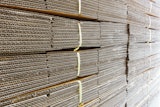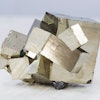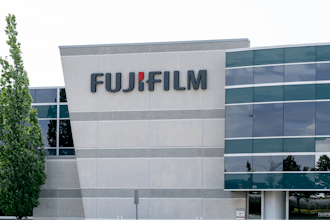See-through flexible packaging is one of the hottest trends in the food industry. Shoppers strolling through the aisles of nearly any U.S. supermarket today will see peanut butter, icing, pet food, granola offerings, fresh vegetables, dry noodles, popcorn and much more packaged in flexible pouches and bags with clear windows, panels and even overall see-through constructions.
Fueling the trend are both technical and social forces.
Recent developments in nano-coated and aluminum oxide (Al2O3) materials have made it possible to construct clear, multi-layer barrier films that protect many foods from contaminants, such as light and moisture. The films can be tinted in virtually any color and printed with text and vivid graphics on high definition flexographic and rotogravure presses. The clear flexible packaging can offer certain cost advantages due to reduced material and printing needs. When clear glossy windows and panels are used in combination with a matte finish on the remainder of a flexible package, the pouch or bag can present the illusion of a 3D appearance. (See sidebar for more on matte finishes.)
ALSO SEE: Preventing Contamination
Social forces include increasing appetites among consumers for product information. For example, marketing research firm Mintel notes in its Food Packaging Trends 2014 report that 54% of [U.S.] shoppers say that it’s important to see a package’s contents. The visual information conveyed by visible food products is so powerful that nearly one-third of shoppers gauge freshness by sight versus an expiration date. Opening a window to packaged foods, then, becomes an effective way to convey information about food product attributes, such as freshness, consistency, size and color.
Putting a food product’s best face behind a clear window can require considerable forethought and package testing. While the new nano and Al2O3 materials that make clear windows possible can protect many food categories from contamination, they have not yet equaled the barrier levels achievable by conventional aluminum foil or metalized films. Accordingly, it may be necessary to test various combinations of clear films to find those that meet requirements for barriers against light, dampness and air.
From a package design perspective, other challenges come into play. For instance, delicate food products like potato chips can incur breakage during shipping and handling and require empty space in the package to accommodate nitrogen that helps to cushion the bag’s contents and keep the product fresh. For this reason, potato chip producers will shy away from exposing a bag’s top, where inches of empty “slack fill” space resides, and its bottom, where crumbs and broken chips have settled. Another example:, Makers of certain cooked, prepared meals, such as rice and vegetable medleys, tend to look far more appetizing after heating than they do in a pre-heated stage, making them unlikely candidates for clear packaging.
Other foods have a natural visual appeal and can earn added attention on retail shelves. Healthy snacks, like granola and trail mixes, housed in clear packaging capture notice on retail shelves with plump fruit and nuts showing through. Colorful fresh vegetables, like carrot sticks and bagged salads, are attention-getters in refrigerated areas. Pet treats can show off their dog bone, bacon strip, T-bone, pig-in-a-blanket and other fanciful shapes. Food manufacturers considering clear packaging often evaluate their products’ visual appearance and might even adjust certain recipes to include bigger or more colorful ingredients, such as large fruit chips and raisins.
Most clear food packaging consists of smaller size pouches and bags. One exception is large bags of bird seed, which also displays well through clear windows.
Large or small, it’s clear that see-through packaging continues to grow. Earlier this year, online graphic design marketplace 99design.com placed clear packaging third in its forecast of “2015’s hottest package design trends.” Continued consumer interest in product evaluation, as well as marketing advantages, will more than likely keep this trend in a fast lane.
Matte finish benefits on shelves and pallets
Brands looking to distinguish their flexible pouches and bags from those of competitors can employ matte finishes as an effective tool. For example, flexible packaging with a textured overall look, but with glossy finishes highlighting logo and graphic focal points, and clear windows showcasing the food product residing inside, can convey a striking presentation. The pebbly matte finishes mimic the look of paper, a packaging material that’s typically associated with top tier food product quality. More, combining matte with glossy or clear finishes provides depth to a package’s appearance.
Matte finishes also solve a transport challenge associated with large flexible packages, such as birdseed bags. When stacked on pallets atop one another, flexible bags with all glossy finishes require slip sheets between or restraining cardboard around to prevent them from shifting, sliding and even falling from their perch. Testing has shown that matte finishes with a coefficient of friction reaching 0.45 provide sufficient resistance to prevent most slippage. The flexible packaging industry has developed the lacquer and the know-how to keep large flexible packages secure on their pallets and intact until they reach their retail destinations.
About the authors: Kevin Young is president, Consumer Goods Packaging, Mondi North America. Markus Hoedebeck is vice president, product development, at Mondi North America’s Jackson, Mo., Consumer Goods Packaging plant. They can be reached at [email protected] and [email protected]. Consumer Goods Packaging, Mondi North America is In Touch Every Day, providing customers with solutions that include stand-up pouches, reclosable bags, microwaveable packaging and other products with optimal barrier properties, along with extruded films for labels.
,























